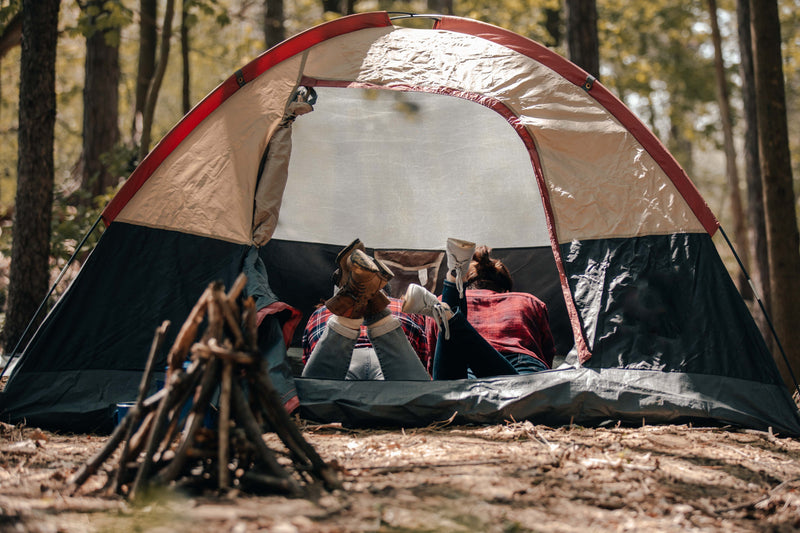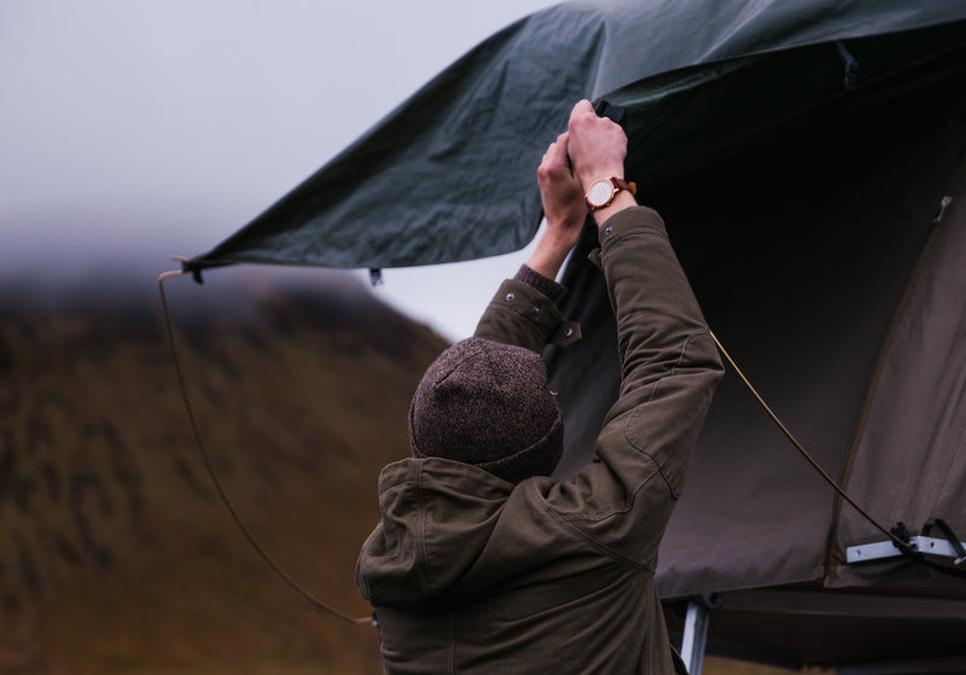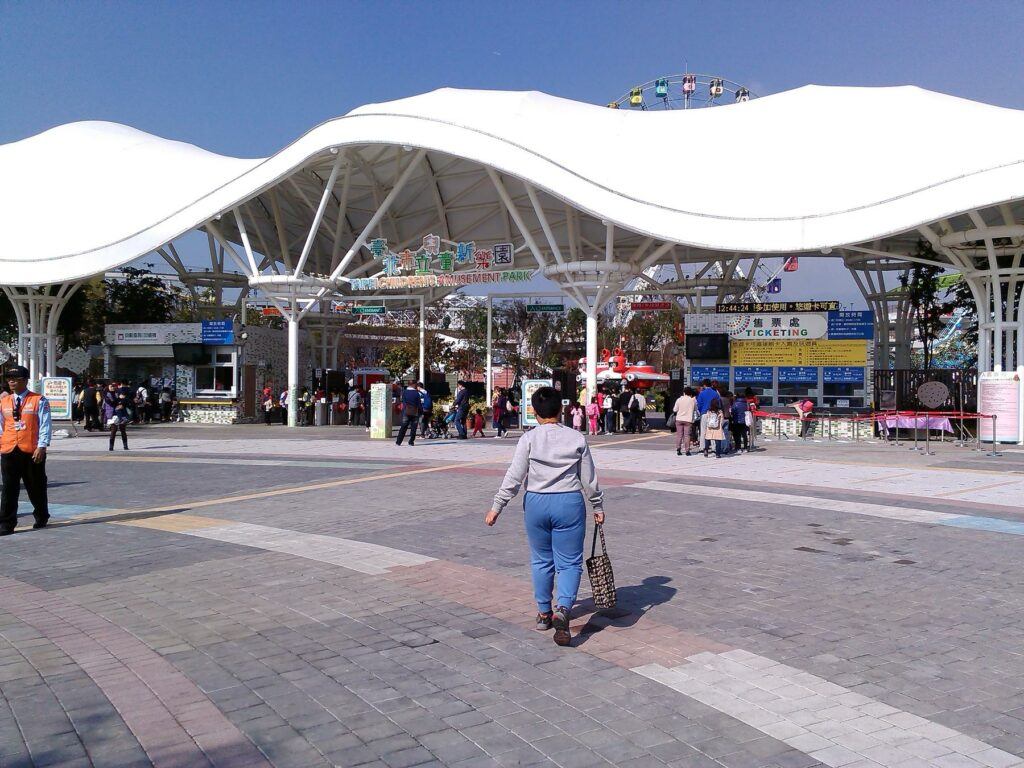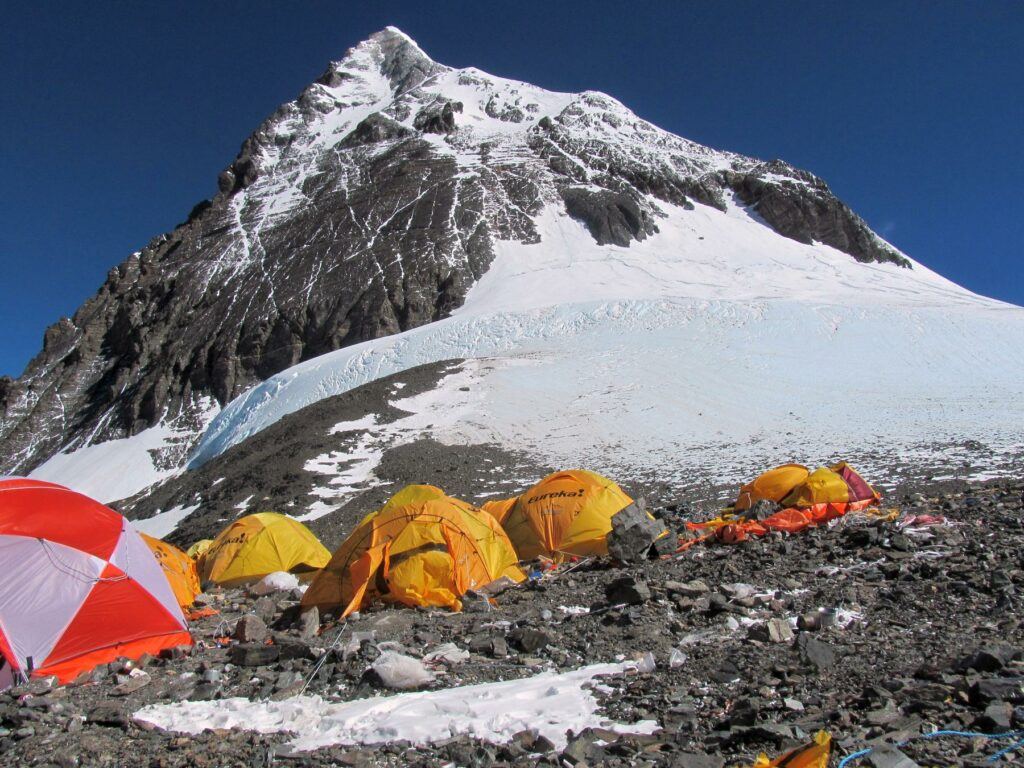Winter camping is an exciting and unique outdoor adventure that many people overlook. While it may seem daunting to brave the cold and snow, camping in winter provides an opportunity to experience nature in a way that can’t be replicated in the warmer months. In this ultimate guide to camping in winter, we’ll cover everything you need to know to plan and prepare for a safe and enjoyable cold weather camping trip. From selecting the right gear to staying warm and dry, we’ve got you covered. So let’s dive in and discover the magic of camping in winter.

Benefits of Camping in Winter
Winter camping is a unique and rewarding experience that offers many benefits. Here are some of the top reasons why you should consider camping in winter:
Fewer Crowds
Winter camping means fewer crowds, giving you the chance to enjoy the tranquility of nature without being surrounded by other campers. You can fully immerse yourself in the beauty of your surroundings and appreciate the peace and quiet that comes with the winter season.
Unique Experiences
Winter camping offers unique experiences that you can’t get in other seasons. You get to witness the stunning snowscapes and landscapes that are only visible during the winter months. You may also get the chance to see wildlife that you wouldn’t typically see in other seasons, such as moose, elk, or even wolves.
Affordable
Winter camping can be a more affordable option, as campsites and rental prices are often lower during the offseason. Additionally, some parks and campsites offer discounted rates for winter camping, making it an excellent option for those on a budget.
Adventure
Camping in winter can be a thrilling adventure that challenges you both mentally and physically. You’ll need to use your skills and creativity to adapt to the cold weather and different conditions. This adventure can create lasting memories and give you a sense of accomplishment.
Health Benefits
Winter camping also offers health benefits, such as increased vitamin D intake from exposure to sunlight and fresh air, which can boost your mood and immune system. The physical exertion of winter camping can also improve your cardiovascular health, endurance, and strength.
Overall, winter camping offers a unique and rewarding experience that provides many benefits for outdoor enthusiasts. Whether you’re looking for adventure, solitude, or a budget-friendly option, winter camping has something for everyone.

Planning and Preparation
Planning and preparation are key to a successful winter camping trip. The first step is to choose a suitable campsite and route. Look for a site that offers shelter from the wind and has access to water and firewood. Additionally, plan your route ahead of time and be prepared for snowy or icy conditions.
When it comes to gear and equipment, invest in high-quality winter camping gear. This includes a four-season tent, a warm sleeping bag, a sleeping pad, layered clothing, and waterproof boots. To stay warm and well-fed, bring a camping stove and plenty of food and water. Pack high-energy snacks and hot drinks to keep your body fueled and hydrated.
Choosing a Campsite
When choosing a campsite, consider the terrain, accessibility, and level of difficulty. Look for a site that provides natural windbreaks, such as trees or rock formations, and has access to water. Check the weather forecast ahead of time to avoid camping during severe weather conditions.
Selecting Gear and Equipment
Invest in high-quality winter camping gear to stay warm and dry. Here are some essentials to include in your winter camping checklist:
- Four-season tent: A four-season tent is designed to withstand harsh weather conditions, including high winds and heavy snow. Look for a tent with a sturdy frame, waterproof materials, and good ventilation.
- Warm sleeping bag: A sleeping bag rated for 0 degrees Fahrenheit or lower is recommended for winter camping. Look for bags with down or synthetic insulation, and consider investing in a sleeping bag liner for extra warmth.
- Sleeping pad: A good sleeping pad is essential for insulation and comfort. Look for a pad with a high R-value (a measure of insulation) and a non-slip surface.
- Layered clothing: Layering is key to staying warm in cold temperatures. Start with a moisture-wicking base layer, add an insulating layer, and finish with a waterproof and breathable outer layer. Look for fabrics that are appropriate for winter weather, such as wool, down, and synthetic materials.
- Waterproof boots: Good quality waterproof boots with good tread are essential for keeping your feet warm and dry while navigating snowy or icy terrain.
- Camping stove: A camping stove is necessary for cooking warm meals and drinks. Look for a stove that is easy to use and fuel-efficient.
Packing Essentials
Pack essential items for your winter camping trip, such as a snow shovel for digging out a campsite, a first-aid kit, an emergency whistle and signal mirror, and navigation tools such as a map and compass or GPS device. Bring extra clothing in case your clothes get wet, and consider bringing hand warmers and a hot water bottle to stay warm throughout the night.
By planning and preparing ahead of time, and choosing the right gear, you can have a safe and enjoyable winter camping experience.
Techniques for Staying Warm and Dry
Staying warm and dry is essential for a successful winter camping trip. The following are some tips to help you stay warm and dry during your winter camping adventure:
Layer Clothing for Warmth
Layering your clothing is key to staying warm in cold temperatures. Start with a moisture-wicking base layer, which will keep sweat away from your skin. Next, add an insulating layer made of wool, down, or synthetic materials to trap body heat. Finally, finish with a waterproof and breathable outer layer to protect against wind and snow.
Choose Appropriate Fabrics
Choosing the right fabrics is crucial for staying warm and dry during winter camping. Look for fabrics that are designed for winter weather, such as wool, down, and synthetic materials. Avoid cotton, as it absorbs moisture and takes a long time to dry.
Select the Right Sleeping Bag
Your sleeping bag is one of the most important pieces of gear for staying warm at night. Choose a sleeping bag that is rated for the coldest temperatures you expect to encounter. Look for a bag with a hood to keep your head warm and a draft collar to prevent heat loss.
Pick a Suitable Shelter
A four-season tent will provide the necessary protection from wind and snow. Look for a tent with a sturdy frame and a rainfly to keep you dry. Set up your tent on a flat and level surface, and use a ground cloth to protect the bottom of your tent from moisture.
By following these tips and techniques, you’ll be well on your way to staying warm and dry during your winter camping trip.

Safety Considerations for Winter Camping
Winter camping can be an amazing way to experience the outdoors, but it also comes with specific risks and safety considerations. To ensure a safe and enjoyable trip, it’s important to take these factors into account. The most significant risks during winter camping are hypothermia and frostbite. These conditions can occur when exposed to cold temperatures for an extended period. To avoid these conditions, it’s important to dress warmly, stay dry, and avoid overexertion.
How to Dress for Winter Camping
Dressing appropriately is one of the most important aspects of staying safe and comfortable during winter camping. Here are some tips for dressing for winter camping:
- Layering is key: Start with a moisture-wicking base layer, add an insulating layer, and finish with a waterproof outer layer.
- Avoid cotton: Cotton is not a suitable material for winter camping as it retains moisture and can lead to hypothermia.
- Cover your extremities: Wear a hat, gloves, and warm socks to keep your extremities warm.
- Bring extra clothing: In the event that your clothes get wet, bring extra clothing to change into.
Navigating Snowy or Icy Terrain
Navigating snowy or icy terrain can be challenging, but there are steps you can take to stay safe. Here are some tips for navigating snowy or icy terrain:
- Wear appropriate footwear: Choose boots with good traction and insulation to prevent slipping and keep your feet warm.
- Use trekking poles: Trekking poles provide added stability and can help prevent falls on slippery terrain.
- Be cautious around water: Avoid walking on frozen bodies of water as the ice may not be thick enough to support your weight.
First-Aid Kits and Emergency Plans
In the event of an emergency, it’s important to have a first-aid kit and emergency plan on hand. Here are some tips for preparing for emergencies:
- Pack a first-aid kit: Be sure to include items such as bandages, gauze, antiseptic, and pain relievers.
- Know how to use your first-aid kit: Familiarize yourself with the contents of your first-aid kit and know how to use them.
- Develop an emergency plan: Have a plan in place in case of an emergency, including how to contact emergency services and what to do if someone in your group becomes injured or ill.
By following these safety considerations for winter camping, you can help ensure a safe and enjoyable trip. However, it’s important to remember that winter camping can still be unpredictable, so always be prepared for the unexpected.
Best Winter Camping Destinations
Winter camping offers a unique way to experience the beauty of nature during the colder months. Here are some of the best winter camping destinations in the US that offer stunning winter landscapes and unforgettable experiences:
Yosemite National Park in California
Yosemite National Park is a winter wonderland with snow-capped peaks, frozen waterfalls, and snowy meadows. The park offers a wide range of winter activities, including snowshoeing, cross-country skiing, and ice skating. One of the highlights of winter camping in Yosemite is the chance to see the Horsetail Fall light up at sunset, creating a stunning natural phenomenon.
Grand Teton National Park in Wyoming
Grand Teton National Park is a winter paradise with serene views of the Teton Range and opportunities for snowshoeing, cross-country skiing, and wildlife viewing. The park offers a peaceful and secluded winter camping experience, with fewer visitors and a chance to immerse yourself in the tranquility of nature.
Acadia National Park in Maine
Acadia National Park transforms into a winter wonderland during the colder months, with snow-covered forests, frozen lakes, and snowshoeing and cross-country skiing trails. The park offers a range of winter activities, including ice fishing and snowmobiling. Winter camping in Acadia is a great way to experience the park’s serene beauty and escape the crowds.
When planning a trip to one of these destinations, research the weather and road conditions ahead of time. Make sure you have the appropriate gear and equipment for the conditions you’ll encounter, including warm clothing, a sturdy tent, and a sleeping bag rated for cold temperatures.

Alternative Winter Camping Options
If the idea of roughing it in the cold doesn’t appeal to you, there are alternative winter camping options that offer warmth and comfort. Yurts, cabins, and lodges are great choices for those who want a more comfortable camping experience while still enjoying the beauty of winter landscapes.
Yurts
Yurts are circular tents made of felt or canvas stretched over a wooden frame. They originated in Central Asia and are used by nomads as portable homes. Yurts are popular for winter camping because they are easy to set up and offer a warm and cozy space. Many yurts come equipped with a wood stove for heat and can sleep up to six people.
Cabins
Cabins are small houses made of wood or logs. They offer more space and amenities than yurts, including electricity and indoor plumbing. Many cabins come equipped with a fireplace or wood stove for heat. Some cabins are located in campgrounds, while others are in more remote locations.
Lodges
Lodges are larger buildings that offer more amenities than yurts or cabins. They often have multiple bedrooms, a living room, a kitchen, and indoor plumbing. Some lodges are located in ski resorts or national parks, offering access to winter activities such as skiing and snowboarding.
Alternative winter camping options offer a more comfortable and convenient camping experience, making them a great choice for those who prefer a warm and cozy retreat.
Personal Experiences of Winter Camping
When it comes to winter camping, personal experiences can vary greatly. Sophie, an experienced camper from Colorado, embarked on a winter camping trip with her friends and was prepared with all the necessary gear, including a four-season tent, a warm sleeping bag, and waterproof boots. However, even with her experience, Sophie knew that winter camping required special preparation.
On the second night of their trip, a sudden snowstorm hit the area, and the temperature dropped significantly. Sophie and her friends were grateful for their warm gear, which allowed them to stay comfortable and dry throughout the night. Unfortunately, one of Sophie’s friends had not invested in proper gear and was quickly becoming hypothermic. Sophie quickly used her knowledge and experience to diagnose the situation and provide her friend with emergency supplies to keep her warm until they could return to their vehicle.
This experience highlights the importance of proper gear and preparation when it comes to winter camping. Without the right equipment, camping in winter can be dangerous and uncomfortable. However, with the right gear and knowledge, winter camping can be a truly rewarding and unforgettable experience. It’s important to know your own limitations and to be aware of the unique challenges that winter camping presents.
Conclusion
Winter camping is a one-of-a-kind experience that outdoor enthusiasts should try at least once in their lifetime. It offers unique benefits such as fewer crowds, stunning winter landscapes, and the peacefulness of nature. Although winter camping can be challenging, with proper planning and preparation, it can be a rewarding and memorable experience.
Remember to plan ahead, pack the right winter camping gear, and stay safe by following the safety guidelines. Layering your clothing, staying hydrated, and keeping your head covered at all times are just a few tricks to stay warm and dry.
Are you ready to embark on a cold-weather adventure? Start planning your winter camping trip today and experience the beauty and thrill of camping in winter.
Call to action: Check out our other outdoor activity guides for more tips and inspiration for your next adventure!
Q & A
Who should go winter camping?
Anyone who loves the outdoors and is prepared for the cold.
What gear do I need for winter camping?
A four-season tent, warm sleeping bag, insulated clothing, and waterproof boots.
How do I stay warm while winter camping?
Layer clothing, stay dry, use a warm sleeping bag, and bring hand warmers.
Who should avoid winter camping?
People who are not prepared for the cold or have health conditions affected by cold weather.
What are the risks of winter camping?
Hypothermia, frostbite, and slipping on icy terrain.
How do I stay safe while winter camping?
Dress appropriately, stay dry, bring a first-aid kit, and be prepared for emergencies.
As an avid outdoorsman for over 20 years, I have extensive experience in camping and hiking in all seasons, including winter. I have completed several winter camping expeditions in various locations across the US, including Yosemite National Park and Grand Teton National Park. Additionally, I hold a degree in Outdoor Recreation and have completed several wilderness first aid and survival courses. My expertise in winter camping has also been recognized by several outdoor publications, including Outdoor Life and Backpacker Magazine.






